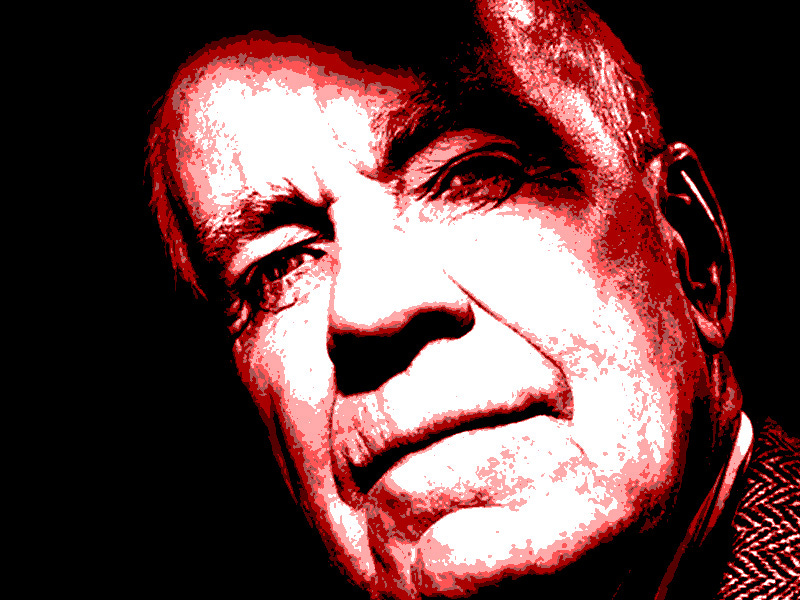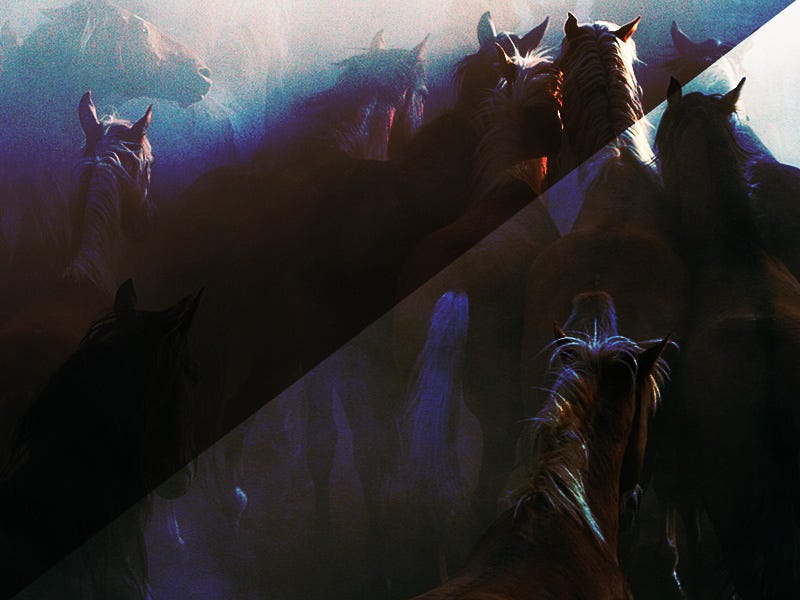
I recently finished Cormac McCarthy’s All the Pretty Horses, which I’d read at the recommendation of a student. Set in 1949, the tale follows 17-year-old John Grady Cole and his buddy Rawlins as they set across the Texas border into Mexico. Without giving too much away, the story is all about… well… all the pretty horses.
Now, a horse can mean many things to many people. But in this book, the horse means something very particular. Cole comes across a horse’s remains right near the beginning of the book:
“There was an old horseskull in the brush and he squatted and picked it up and turn it in his hands. Frail and brittle. Bleached paper white. He squatted in the long light holding it, the comicbook teeth loose in their sockets. The joints in the cranium like a ragged welding of the bone plates. The muted run of sand in the brainbox when he turned it”
The “comicbook teeth” and the “ragged welding.” Can you feel the teeth wiggling in place and then falling out into your hands? Or the soldered jawbone just hanging there?
Here’s a description of a horse in motion:
“While inside the vaulting of the ribs between his knees the darkly meated heart pumped of who’s will and the blood pulsed and the bowels shifted in their massive blue convolutions of who’s will and the stout thighbones and knee and cannon and the tendons like flaxen hawsers that drew and flexed and drew and flexed at their articulations and of who’s will all sheathed and muffled in the flesh and the hooves that stove wells in the morning groundmist and the head turning side to side and the great slavering keyboard of his teeth and the hot globes of his eyes where the world burned” (128).
The “great slavering keyboard” for teeth. I love it.
For the sake of this book, McCarthy invites us to consider the horse as a symbol right after World War II in the American southwest.
“What he [Cole] loved in horses was what he loved in men, the blood and the heat of the blood that ran them. All his reverence and all his fondness and all the leanings of his life were for the ardenthearted and they would always be so and never be otherwise” (6).
And thus begins McCarthy’s lesson about the domestication of man after the Second World War. The horse serves as the vehicle to explore this jarring move in man from wild to tame.
The reader picks up a nice hermeneutic key right in the very beginning of the book when Cole goes to watch his mom act in a play (she’d inherited a massive ranch which had fallen into disarray). After the play, Cole muses as to the meaning of what he’d seen.
“He’d notion that there would be something in the story itself to tell him about the way the world was or was becoming but there was not. There was nothing in it at all” (21).
This is what McCarthy is going to do. He’s going to tell us about how the world is changing (or was changing in 1949). And he’s going to tell us how the world is, with all of its melancholy and blood and friendship and hope (cf. 301). And he’s going to do it with horses. All the pretty ones, that is.

Why should you read this book?
McCarthy is a poet of the first order. In addition to a narrative about modernity (and the domestication of man), you’ll also be treated to beautiful language. In other words, you’ll enjoy the ride.
In addition to his genius for metaphor, McCarthy can sling together a mean simile, too. The coach windows of a moving train look “like great dominoes smoldering in the dark” (254). Politically turbulent Mexico appears “like a rare vase being carried about by a child” (233). Cole smokes a cigarette in darkness. His sutured face glows “like some dull read theatric mask indifferently repaired” (215).
The synesthesia of these similes, the crossing of the senses, is nothing but a treat for the reader. Typically, on the great podium of tropes, simile stands in second or third behind first place metaphor. Yet McCarthy’s similes resonate under his influence.
Just a quick word on his form, too. One thing you’ll notice from the very beginning is McCarthy’s disregard for all things related to commas and you will find that he likes to string together independent clauses where he describes the bramble bush and juniper and the sun coppering the hero’s face and although it takes some getting used to you really don’t mind it in the end because it feels like you’re getting straight to the point without any of those dang commas tripping you up as you follow the tale.
So, saddle up and read. There are some memorable scenes that you won’t forget (like a knife fight in a prison). Adios and happy reading!
Title: All the Pretty Horses
Author: Cormac McCarthy
Rating: 4.5/5
Genre: Historical fiction; buddy travel story
The moral dimension: Violence and adult content; reader discretion advised


